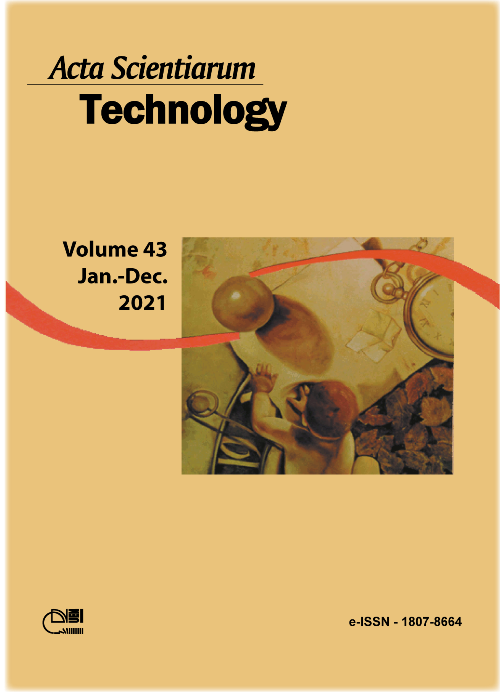Green synthesis: characterization and biological activity of silver nanoparticles using aqueous extracts of plants from the Arecaceae family
DOI:
https://doi.org/10.4025/actascitechnol.v43i1.52011Keywords:
scanning electron microscopy; dynamic light scattering; antimicrobial activity; transmission electron microscopy.Abstract
This study proposes the preparation, characterization, and evaluation of the antimicrobial activity of silver nanoparticles (AgNPs). AgNPs were synthesized from the leaf extracts of plants from the Arecaceae family, which are abundant in the Amazon region. AgNPs were characterized using UV/Vis spectroscopy, Fourier Transform Infrared Spectroscopy (FTIR), dynamic light scattering (DLS), and their minimum inhibitory concentrations (MIC) against the bacteria Escherichia coli and Staphylococcus aureus. AgNPs presented maximum absorbance between 420 and 430 nm, the mean diameter obtained by DLS ranged from 130.43 to 352.93 nm and the polydispersity index (PdI) ranged from 0.523 to 0.689. The surface charge measured by the Zeta potential was negative and ranged from -17.2 to -26.97 mV. FTIR analysis suggests that the phenolic compounds and/or proteins in the chemical composition of the plants studied may have been responsible for the reduction of Ag+ ions and stabilization of AgNPs. The morphology of AgNPs observed was largely spherical and presented some agglomerates. Transmission electron microscopy analyses showed polydispersed AgNPs without the formation of large agglomerates. The synthesized AgNPs presented homogeneity and rapid bioreduction. The concentration of AgNPs required to eliminate microorganisms by up to 90% was lower for Gram-negative bacteria (2.75 μg mL-1) than for Gram-positive bacteria (21.75 μg mL-1). In addition, AgNPs synthesized from plant species that are native to the Amazon proved to be promising, since they showed excellent antimicrobial activity against microorganisms of clinical interest.
Downloads
Downloads
Published
How to Cite
Issue
Section
License
DECLARATION OF ORIGINALITY AND COPYRIGHTS
I Declare that current article is original and has not been submitted for publication, in part or in whole, to any other national or international journal.
The copyrights belong exclusively to the authors. Published content is licensed under Creative Commons Attribution 4.0 (CC BY 4.0) guidelines, which allows sharing (copy and distribution of the material in any medium or format) and adaptation (remix, transform, and build upon the material) for any purpose, even commercially, under the terms of attribution.
Read this link for further information on how to use CC BY 4.0 properly.



















8.png)




